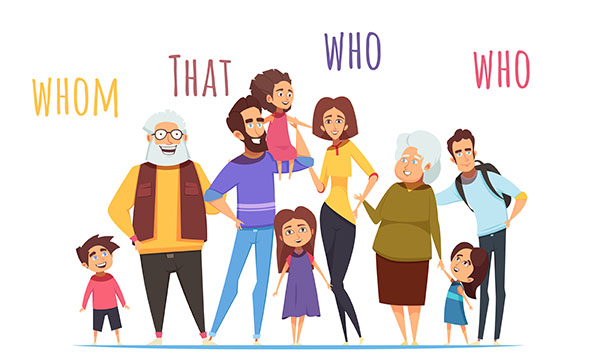What are Relative Pronouns?
Relative pronouns connect a phrase to a noun or pronoun, generally in order to provide more information. They are “that,” “which,” “who,” “whom,” and “whose.”
Types of Relative Pronouns:
The relative pronouns in English are that, which, who, and whom. We use the following:
- Who and whom for people.
- Which for things.
- That for people or things.
Examples of Relative Pronouns
Here are some examples of relative pronouns that helps to illustrate how they can provide additional information to sentences by connecting them to clauses or phrases:
- 1- Be sure to pack the dress that is your favorite.
- That introduces “your favorite,” which describes the dress.
- 2- Miriam is an artist who is very talented.
- Who introduces “is very talented,” which describes Miriam.
- 3- My little brother, who is 18 years old, just started college.
- Who introduces “is 18 years old,” which describes my little brother.
- 4- We had apple cake, which I always enjoy.
- Which introduces “always enjoy,” which describes apple cake.
- 5- He is a famous sculptor, which I did not realize when I met him.
- Which introduces “I did not realize,” which describes the famous sculptor.
- 6- I needed the book that I left at home this morning.
- That introduces “I left at home this morning,” which describes the book.
- 7- Jonathan is a young man who appears to be a promising architect.
- Who introduces “a promising architect,” which describes Jonathan.
As you can see in these examples, the relative pronouns provide information that makes the sentence more understandable. These clauses or brief phrases can be used in place of lengthy additional sentences.

